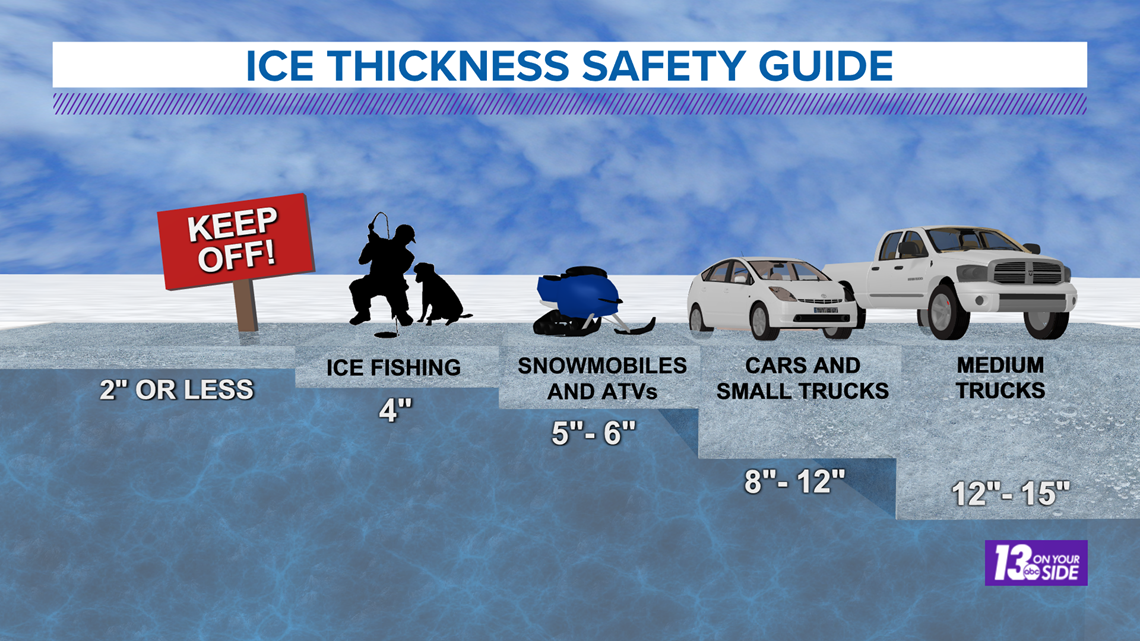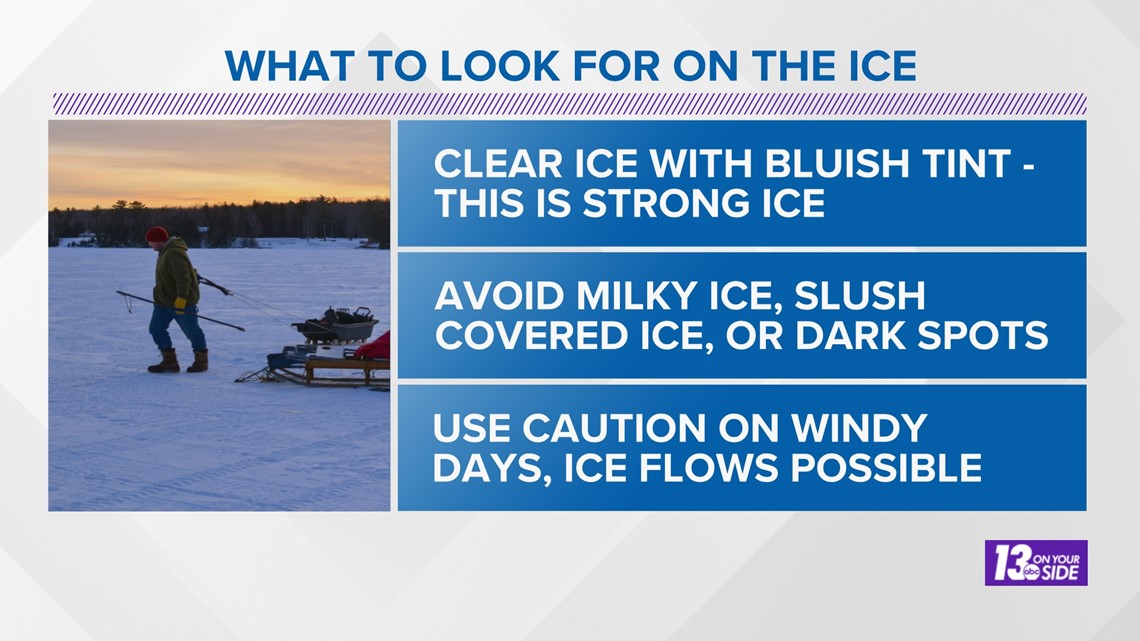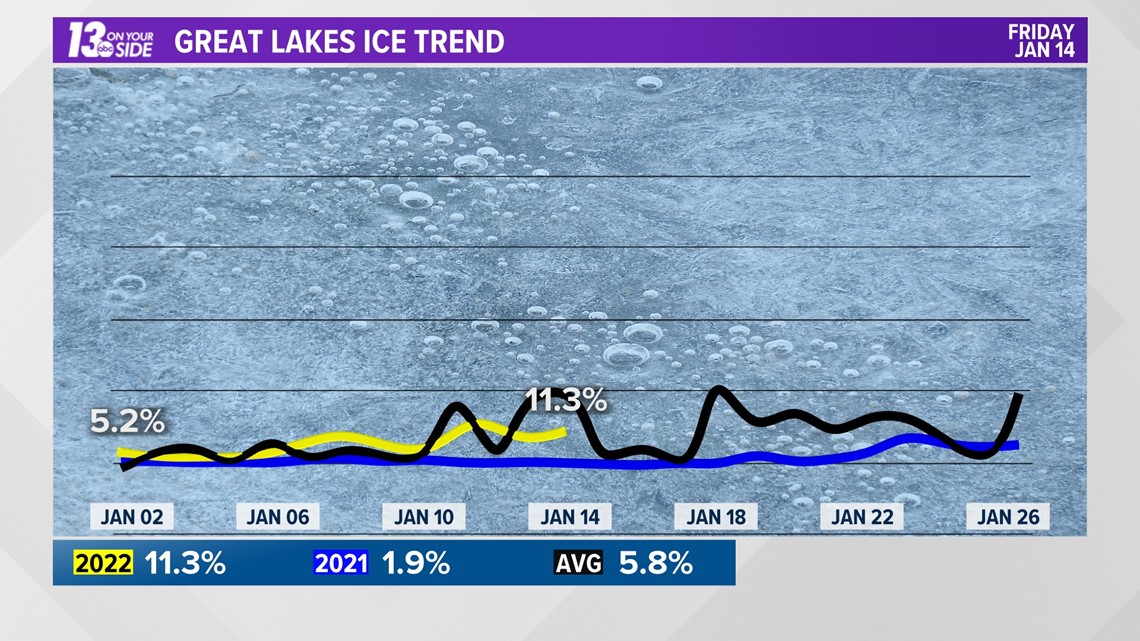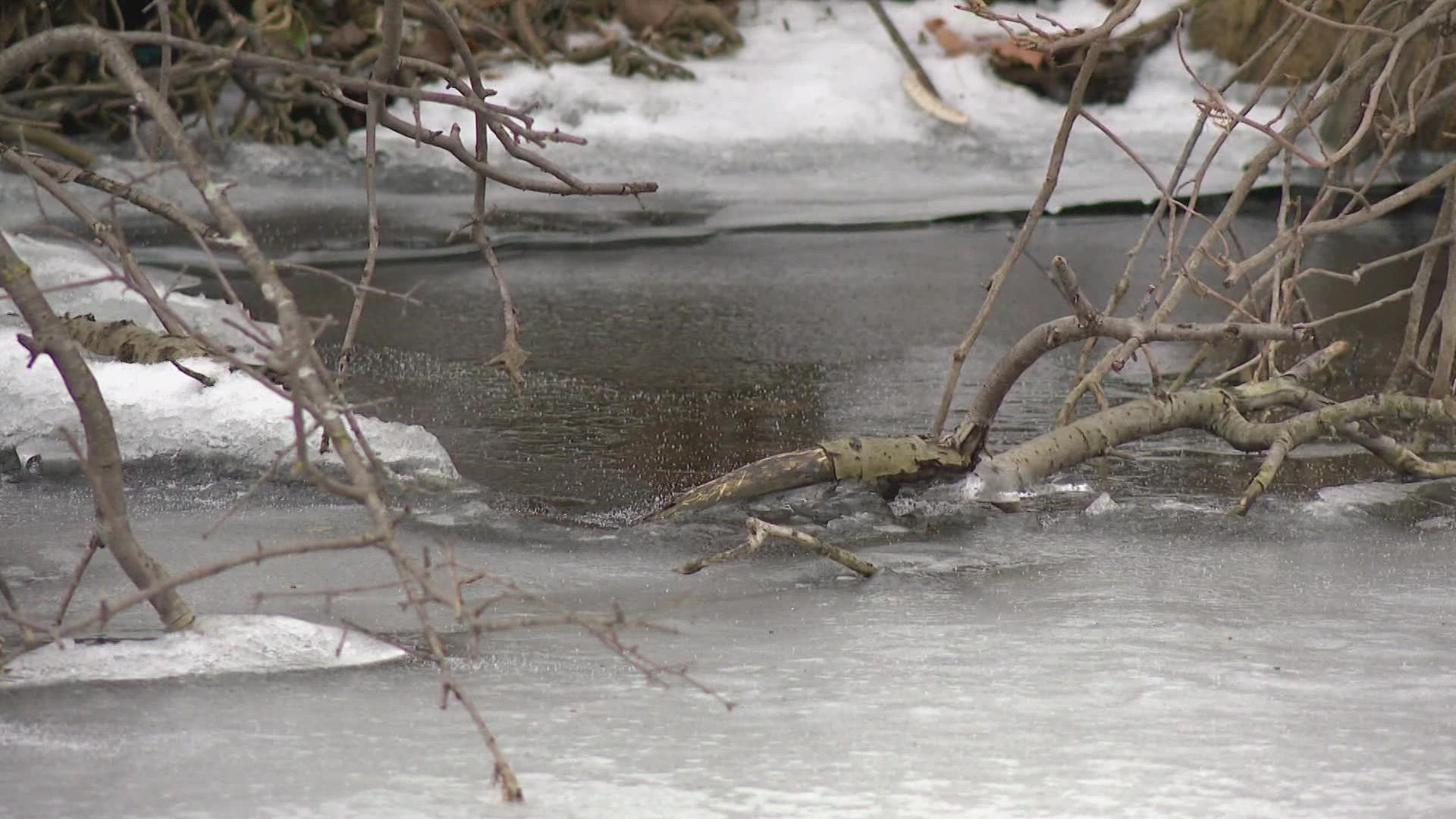EAST GRAND RAPIDS, Mich. — As ice fishermen and other winter sports enthusiasts begin to dot West Michigan's now frozen inland lakes and ponds, ever-changing conditions prompt familiar safety questions.
Local police remind anyone thinking of venturing out to prepare well in advance for any scenario and observe several basic principles.
Officer Troy Brown of the East Grand Rapids Department of Public Safety said doing so may offer a critical lifeline in the event of an emergency.
He recommended enthusiasts:
- Be accompanied by one or several partners who could intervene if needed.
- Inform friends and family where they're going and when they'll return.
- Be mindful of the weather report and changing conditions which may affect ice thickness.
Brown also suggested those venturing out pack the following:
- A fully-charged cellular phone equipped with GPS
- An ice spud to test depth
- A set of ice spikes to pull themselves out of the water in the event of a breakage
At these temperatures, hypothermia will set in rapidly, complicating chances of escape. He also cautioned that, no ice is safe ice, however there are some things you can look for in order to know which areas of frozen water are more safe than others.
First, consider the thickness. Ice 2 inches or less should always be avoided, and you should wait until at least 4 inches forms before you head out onto the ice to fish. Vehicles need at least 8 inches of ice to venture out safely, more for heavier trucks.


It's not just a game of thickness though, you must also stay aware of the condition the ice is in. Clear ice with a bluish tint is the strongest, while milky ice or ice with slush on top should be avoided. Also use caution on windy days as ice flows may form and carry off sections of the ice cover.


Finally, stay aware that ice conditions can change in a matter of hours by both natural and man-made causes. Ice breakers may travel through channels or open lake ice and weaken the areas around their path. Additionally, a few hours of sun/warmer air could lead to pressure cracks and quickly degraded ice safety.
Even in the dead of winter, ice levels fluctuate up and down frequently. Just because the ice was safe yesterday, or even hours ago, does not mean it still is. Always re-check conditions before you venture out onto any ice!


Related video:
►Make it easy to keep up to date with more stories like this. Download the 13 ON YOUR SIDE app now.
Have a news tip? Email news@13onyourside.com, visit our Facebook page or Twitter. Subscribe to our YouTube channel.

